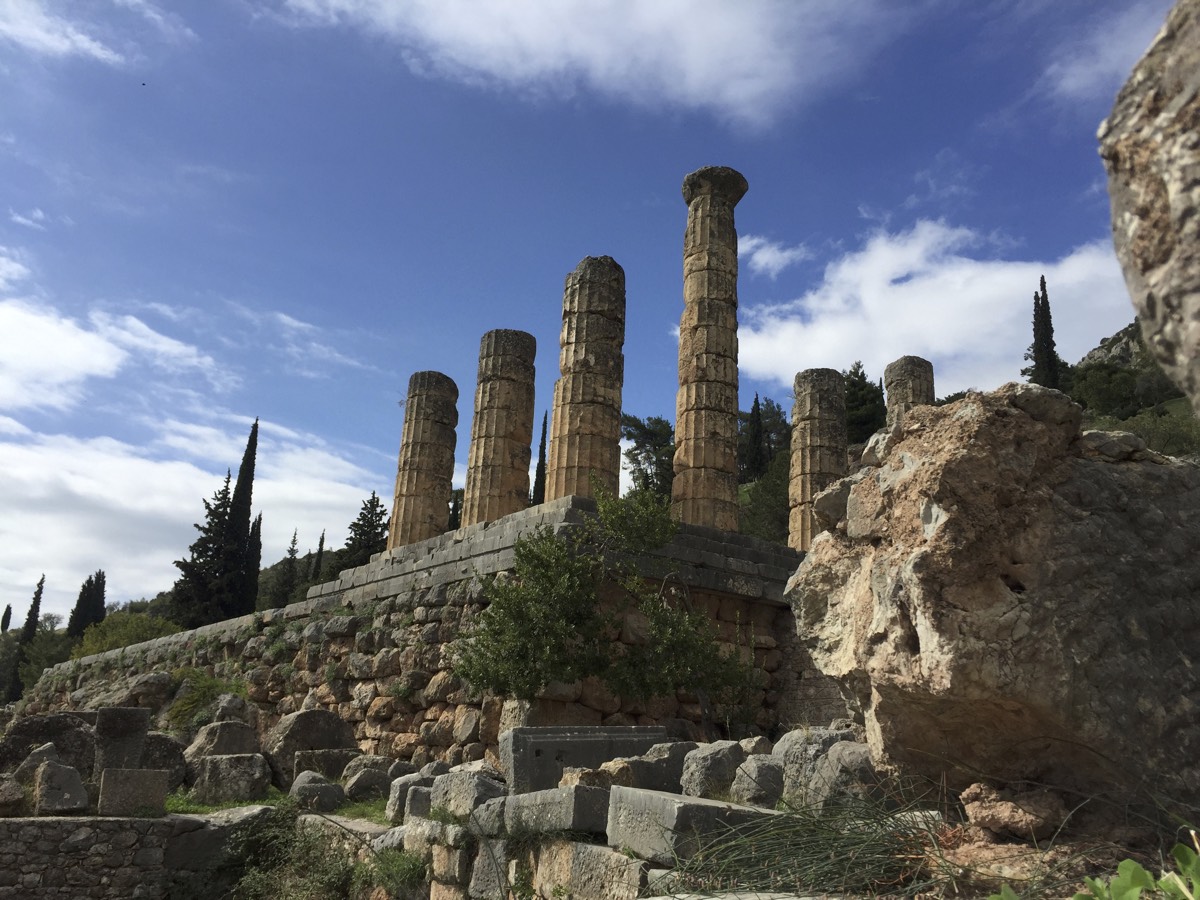
Archeologists and other scientists have long known that intoxicating gases emanating from water flowing from deep within the earth likely produced the visions of the oracle of Delphi, a seer who guided ancient Greeks with her prophecies from around 800 BC through the 4th century AD from her temple on Mount Parnassus.
Now new research suggests many other Greek sacred sites were built on similar fissures created by earthquakes throughout the Eastern Mediterranean.
"The ancient Greeks placed great value on hot springs unlocked by earthquakes," said Iain Stewart, professor of geoscience communication and director of the Sustainable Earth Institute at the University of Plymouth in Britain. "But perhaps the building of temples and cities close to these sites was more systematic than has previously been thought."
In a study published recently in the Proceedings of the Geologists' Association, Stewart showed how temples and other structures at Mycenae, Ephesus, Cnidus, and Hierapolis were, like Delphi, built and rebuilt over earthquake faults.
In Cnidus, an ancient, ruined city in what is now southwestern coastal Turkey, for example, locals erected a temple in the same place — over a fault in hindsight — even after earthquakes wrecked it.
"You think, ‘That's bad luck, isn't it?'" said Stewart, describing when he first reached his findings after reviewing his data. "Then it dawns on you. These people weren't stupid. There was this grand dawning that there was probably something deliberate here."
RELATED: Ancient Babylonian Tablet Identified as the World's Oldest Trigonometry Table
Sign up for the Live Science daily newsletter now
Get the world’s most fascinating discoveries delivered straight to your inbox.
The pattern repeats in other cities, reflecting how Greeks viewed the underworld as the destination for the soul after death and a source of mystical power and knowledge. "We don't have a culture that looks down," said Stewart. "We have a culture that looks up to the stars."
Conversely, in his paper Stewart speculates that seismic activity could have cut off hot springs that had justified an oracle at Perachora Heraion, a sanctuary founded in honor of the goddess Hera in the 9th century BC near Corinth but then fell into disuse in 300 BC potentially after earthquakes.
Greeks also of course didn't live in cities with skyscrapers and millions of residents, either, he added. Earthquakes would have been viewed more as mystical occurrences and not natural disasters caused by the movement of tectonic plates. Historical and geological records show that earthquakes were frequent at the height of ancient Greek civilization, he added.
"It's hard [for people today] to separate the modern take that earthquakes are dangerous," said Stewart. "We kind of know too much. We know what they can do. In ancient times, they would have seen them very differently. In the course of 30 seconds, the ground would open up and then everything would go back to normal."
RELATED: Antimony Poisoning — Not Lead — May Have Contributed to the Roman Empire's Fall Stewart added that archeologists might also look at sacred sites in South America, the Middle East, and Asia to see whether earthquake fault lines played a role in their construction.
But Stewart admitted he wasn't an archeologist. More work needed to be done to fully explore his thesis, he said, adding that he published his paper as a "provocation" for other more qualified researchers to take up the topic.
"I do recognize that when geologists lumber into archeological territory, they make mistakes," he said. "I'm quite happy with archeologists taking us to task."
Originally published on Seeker.










